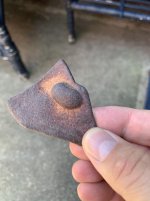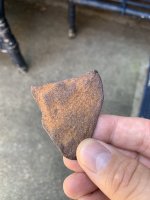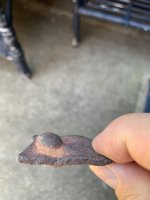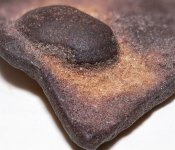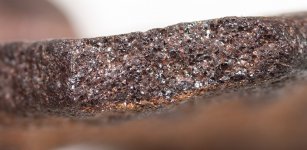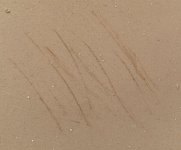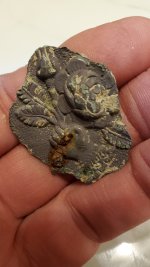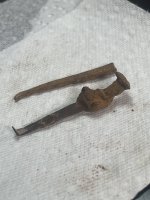Hello group.
I found this rock on a beach in Bayfield, WI along Lake Superior. I broke off a small corner of it with a pliers to make sure it wasn't metal, because it looked a little like it by the color. It broke easily. It almost looks like the raised, kidney bean shaped lump is another rock that fused with the flat portion. The entire rock sparkles just a little bit in the sunlight. Thanks in advance for any help you can offer.
I found this rock on a beach in Bayfield, WI along Lake Superior. I broke off a small corner of it with a pliers to make sure it wasn't metal, because it looked a little like it by the color. It broke easily. It almost looks like the raised, kidney bean shaped lump is another rock that fused with the flat portion. The entire rock sparkles just a little bit in the sunlight. Thanks in advance for any help you can offer.


